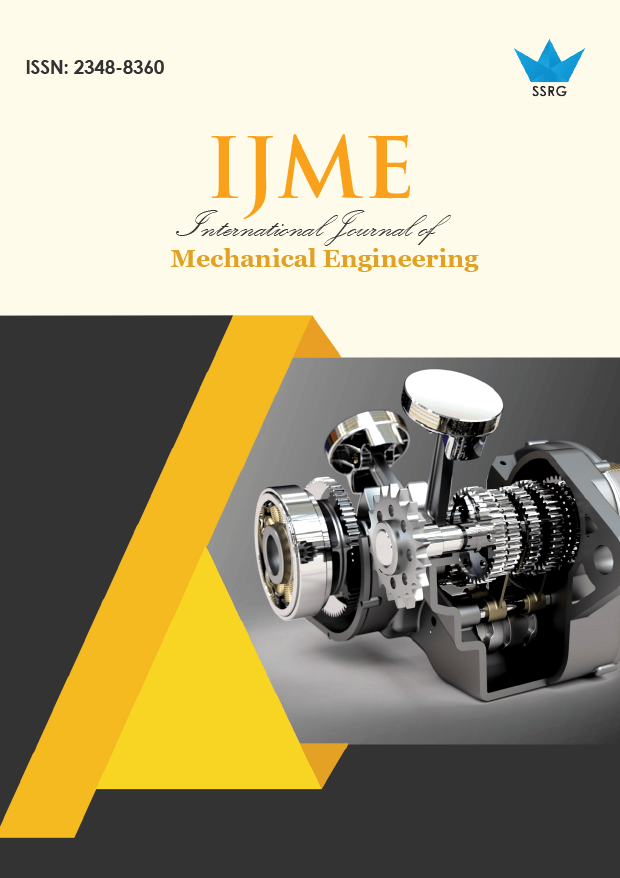Hatchback versus Sedan – A Review of Drag Issues

| International Journal of Mechanical Engineering |
| © 2017 by SSRG - IJME Journal |
| Volume 4 Issue 1 |
| Year of Publication : 2017 |
| Authors : Vivek Yakkundi, Shankar Mantha, Vivek Sunnapwar |
How to Cite?
Vivek Yakkundi, Shankar Mantha, Vivek Sunnapwar, "Hatchback versus Sedan – A Review of Drag Issues," SSRG International Journal of Mechanical Engineering, vol. 4, no. 1, pp. 5-13, 2017. Crossref, https://doi.org/10.14445/23488360/IJME-V4I1P102
Abstract:
Aerodynamic drag or the wind resistance is considered to be of prime concern in vehicle design .The other important issues being the vehicle weight , fuel efficiency & emissions .The twentieth century in particular has witnessed refinement in vehicle design in terms of issues mentioned above. However the focus in this paper is on drag & related issues. It is worth noting that reduction of one count of drag i.e ΔCD = 0.1 translates into an improvement of milage of 2.60 km. As per DOT figures India has approximately 15 million cars plying on the roads as recorded during 2011. Further few hundreds are added every day. Therefore there is enormous scope for improving aerodynamics of cars looking at its growing number, which directly reflects the fuel consumption. It is observed that Hatchbacks or the two box version of cars are becoming popular than contemporary Sedan or the three box version inspite of lower drag value of Sedans, thus creating a conflict of choice amongst customers .The reasons cited are convenience of luggage boot space inside, smaller and compact size due to reduction in wheel base, better power to weight ratio, better manoeuvrability and lesser parking space. In the present paper analysis a midsegment Hatchback and its Sedan version is modelled form its image and CFD analysis is done to predict drag and other aerodynamic characteristics such as lift, flow over the car and analysis of wake / separation in the rear slant. The results of Hatchback and Sedan are compared and it is ascertained that the drag value of Sedan is lower than Hatchback.
Keywords:
Aerodynamics, Turbulence, Computational Fluid Dynamics, Numerical Simulation, Drag
References:
1. B Basara- AVL List GMBH, Graz Austria, V Przulj – AVL UK Ltd. Northwich UK , P Tibaut – AVL AST Maribor , Slovania. ( On the calculation of external aerodynamics : Industrial benchmarks – SAE 2001-01-0701 )
2. C.P.Van Dam , Recent experience with different methods of drag prediction.Elsavier,Pergamon , (1999.)
3. E.L.Houghton , P.L.Carpenter- Aerodynamics for Engineering students.Butterworth Heinman (2003)
4. Emmauel Guilminaeu –“Computational study of flow around a simplified car body”ELSAVIER,Journal of wind engg-(2007)
5. Hereman Lienhart & Stefan Becker – “ Flow and turbulence structure in the wake of a simplified car model .” (SAE-2003- 01-0656 )
6. Hitoshi Fukuda,Kazuo Yanagimoto,Hiroshi China,Kunio Nakagawa-Improvement of aerodynamics by wake control.- Elsevier-JSAE-1984.
7. Ichinose.K. Ito.S. , Accuracy of drag prediction on bluff bodies using CFD.JSAE Rev 1998 , 19: 151-60.
8. John D Andersen – CFD – The basics with applications.
9. Mats Ramnofors – Volvo data corp , Rikard Bensryd – Volvo data corp , Elna Homeberg – Volvo data corp , Sven Perzon – Chamlers University of Technology ( Accuracy of drag predictions on cars using CFD – Effect of grid refinement and turbulence models – SAE 960681 )
10. Norburt Grun – Tesis GMBH ( Simulating external vehicle aerodynamics with carflow SAE 960679 )
11. Patankar S.V. 1980 , Numerical heat transfer & fluid flow ,Hemisphere publishing corporation ,New York 12. Pieter Wesseling – Principles of CFD.Springer(2001)
13. Richard M Wood – Solus-Solutions and Technology ( Impact of advanced aerodynamic Technology on transportation energy consumption SAE 2004-01-1306 )
14. S.R.Ahmed & G.Ramm,G.Faltin “ Some salient features of the time averaged ground vehicle wake.”( SAE-840300)
15. Saeyoung Han , V Sumantran , Clark Harris , Ted Kuzmanov , Mark Heubler , Thomas Zak – General motors ( Flowfield simulations of three simplified shapes and comparison with experimental measurements – SAE 960678 )
16. Stephen B Pope – Turbulent flows. Cambridge University Press (2000)
17. T.Morel , Aerodynamic drag of bluff body shapes Charecteristics of hatchback cars.( SAE-780267)
18. Veersteeg.H.K. & Malaseekara- Introduction to CFD-The finite volume method.Longman Scientific & Technical (1995)
19. Wolf Heinrich Hucho – Aerodynamics of road vehicles.Butterworth,Boston(1998)

 10.14445/23488360/IJME-V4I1P102
10.14445/23488360/IJME-V4I1P102